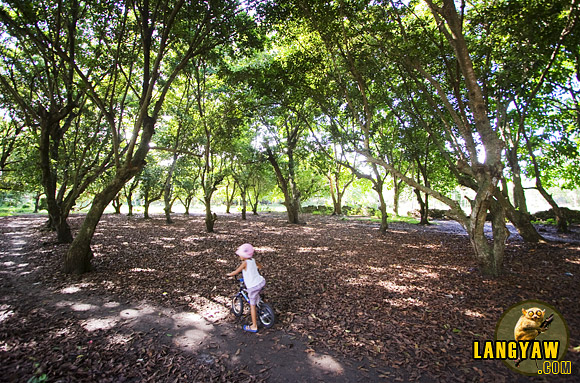
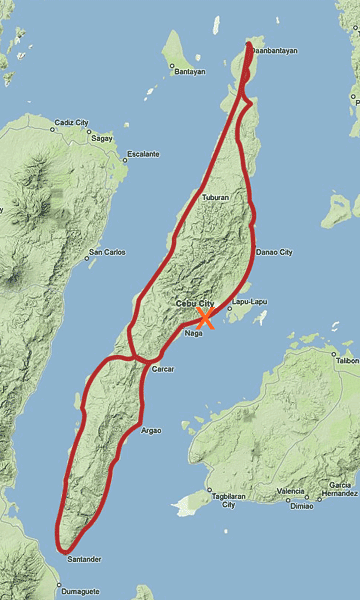

 Speak of Cebu and images of the Sto. Niño , the province’s patron, come to mind. And so does the valiant Lapu-Lapu, sweet mangoes, the famous lechon, guitars and beaches. But it is more than that. Cebu is a special and beautiful place. It is also my home.
Speak of Cebu and images of the Sto. Niño , the province’s patron, come to mind. And so does the valiant Lapu-Lapu, sweet mangoes, the famous lechon, guitars and beaches. But it is more than that. Cebu is a special and beautiful place. It is also my home.
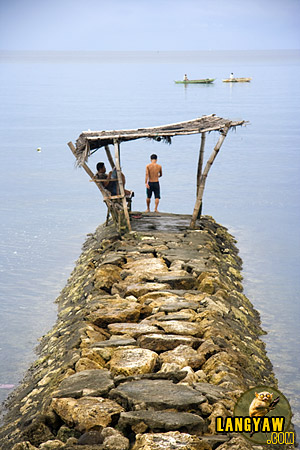
We woke early than usual for the roadtrip to the northern part of Cebu, the second and final leg in our attempt to tour the entire island via it’s coastal roads. It’s a much longer route, more rough and more interesting for me. Earlier, we did the southern end. This, I fondly call Cebu Ocho, in reference to the route we took that resembles the number 8.
Compared with the south, northern Cebu is the least developed and not as familiar. In the northwest side, some portions of the road are not paved and with the looming elections, work is underway. What it lacks in infrastructure, it compensates with it’s natural beauty. The simple and hardy Cebuano life is lived here with grace, humility and strength.

The trip really starts once you get past the city of Mandaue and the town of Consolacion, and to some extent, Liloan where it’s just like any other populated place near the city. The beautiful stands of chicos trees distributed in patches along the highway in Compostela sets the tone. I can always remember the large brown fruits of the ponderosa variety, that came from this municipality during my childhood.
In Danao, the seascape is just stunning as fishermen go about their daily routine. Small bancas juxtapose with the larger fishing boats while the huge wooden motorized pumpboats arrive with their passangers and goods from Camotes islands. But you should be there early in the morning or else, such scenery is gone by noon. On a good day, the sea is placid casting an almost mirror image of the sky. Looking for handmade guns locally called paltik? You can’t find it bannered along the road unless you go to the hinterland barangays where it’s an underground and illegal industry.
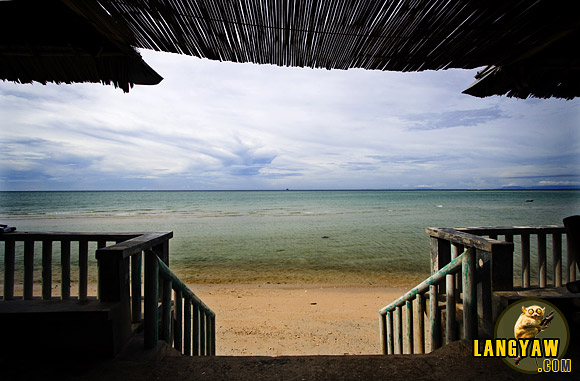

The town of Catmon brings you to roads that provides sheer drops to the sea before entering the rolling hills of Borbon and Tabogon. Winding and rising in elevation, the vehicle slows. Roll down your windows, shut the aircon and just enjoy the view and the fresh air before motoring back to flat land.

North Cebu has the largest flat area in the province that is ideal for one major crop: sugar. It was introduced by the Spaniards during the late 19th century in the entire island that it became one of the top producer of the commodity competing with the then reigning queen, Iloilo. Today, the sugar industry is concentrated in this area.
When traveling the city of Bogo and the towns of Daan Bantayan, Medellin and San Remegio, you can be forgiven for thinking that you’re passing through Negros as a big swathe of land is transformed into sugarcane fields that seem to stretch out into the horizon. When it’s harvest season, sacadas are busy cutting and transporting the canes while before planting, hills are aflame to prepare the land.
Beyond the sugarfields, the beaches are in abundance and one can either chose to go to the many resorts or stop in some lonely sandy stretch. If it’s during weekdays, you can have it all to yourself. The north is also the gateway to the popular vacation islands of Bantayan and Malapascua.
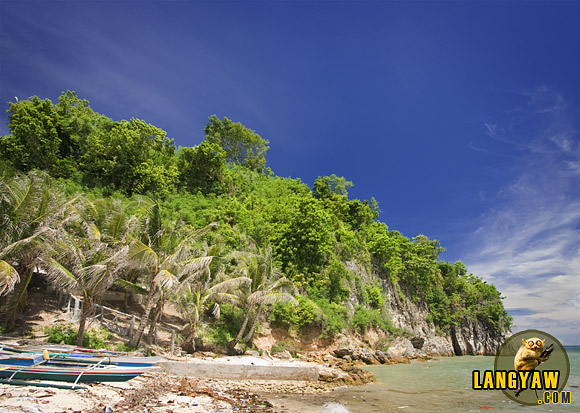
A word about Daan Bantayan. It’s the Cebuano phrase which translates to old watchtower. The municipality got it’s name from the bantayan sa hari, literally, the king’s watchtower or king’s sentinel. The stone structure used to stand above this hill in Tapilon overlooking the sea keeping watch of invading muslim slave raiders that ravaged the Philippine archipelago, and especially Cebu, during the late 18th and early 19th centuries.
Unfortunately, I find it sad that the people in this town, especially the younger ones don’t know the significance of the hill or of the former watchtower. They don’t even know why their town is called Daan Bantayan even if it is in the municipal government’s logo. When I asked around, people just scratch their heads or give back blank stares. At the tourism office, you can’t find posted information about the etymology. All they have are images of Malapascua, other beaches and islands.

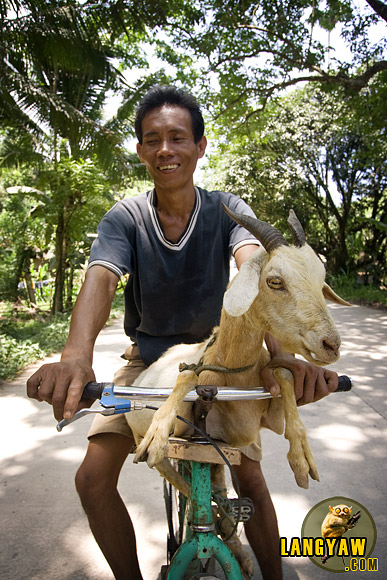
The road past San Remegio, into the municipality of Tabuelan is forlorn. Welcome to terra incognita. Okay, I might be saying it too much but it’s not really a big exaggeration. Just a small one. Well paved and a few bad roads are deserted with the occasional (and exasperating) Corominas Brothers, or the yellow Pesiao buses that ply the route.
Habalhabal motorcycles, are familiar transport here and you might find unconventional gasoline stations at the road. At first, you would be asking why they’re selling softdrinks in only one liter bottles and in different colors. If you ask for an ice cold one, laughs and grins greet as they tell you that these are gasoline. With fuel stations located only in the town centers of Tuburan and Asturias, you don’t have much option but to buy overpriced drinks for your vehicle.
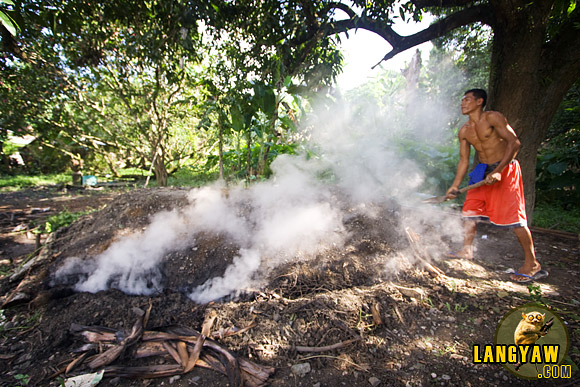
Along the road, many surprises and curiosities pass that sometimes, you’ll just have to stop, take a photo or ask about it. In one instance, a man was transporting his goat atop his bike that I pulled over and snapped an image. In another, I got curious with what two men were doing under the shade of a mango tree tending a huge mound of earth with smoke coming from the ground. So that’s how they make charcoal!, I exclaimed after one explained it to me. In a shallow pit, chopped wood is put on fire and then covered with soil. For the next six days, yes, 6, they tend to this to get a consistent burn.


One thing that a traveler can readily notice while doing the North Cebu route are the presence of mangrove patches along the coast, especially at the western side. While it is difficult to find old stands, there are many young trees that have, obviously, been planted a few years ago. And this is a good thing. The people here, dependent on the sea to make a living, are environmentally aware and recognizes the importance of these buffer zones.
North Cebu particularly the western side, might not be as developed as the rest of the province, but I really had fun. Life is simple and uncomplicated. People are friendly and it has enough surprises that makes traveling here enjoyable.

the northern tip i missed visiting. i was only up until bogo and bantayan island. next time, i know what not to miss. i particularly like the pangpang of daan bantayan.
as for the girl on top of a mangrove, i wonder how she got there.
i love the countryside!
:O superb! amazing, amazing photos!! lol on the gasoline story, we have “gas stations” like that in our subdivision for trikes!
Your great story brings back memories of my solo trip to Malapascua many years ago. I would love to go back there and hopefully visit Bantayan.
Cebu indeed had lots of beautiful places to be visited. I’d been to Cebu but never been in some of the places you’ve mentioned here (though I made my own “loop” there in 1993 but my memory was getting dull).
It’s good to know that people are now environmentally aware about and had already planted some mangrove trees. I like your photo of the pangpang and the viewpoint of the sea from inside the cottage.
I wonder how the girl climb up into that mangrove tree. She seemed not getting wet…
Oh, by the way, before I forget. I’d been to Danao City and stayed there for a few days.
what idyllic photos! awe-inspiring!
“Life is simple and uncomplicated. People are friendly and it has enough surprises that makes traveling here enjoyable.” – seem like a perfect getaway from all the hassles of city life.
the girl climbed walked through a fallen wood of mangrove
@giselle, saan naman banda? di naman siguro probinsiyang probinsiya. finding it in a city would be very fascinating
Hi estan, I love the northern end of Cebu, hillier and more mountanous than the south on this side of the island, not as well known, but the most beautiful. You take some cool pics!
Bantayan is beautiful. After just one day at Cebu City we already hit the road to Bantayan, there is so many places to explore but so little time, hope to go back there and the same road trip from north to south.
Hi Estan,
With all those very nice destinations posted in your travel blog, nalilito na ako if alin ang uunahin kong puntahan. I think those beach destinations will be reserved for summer…kaso very unpredictable na ang weather natin.
@lina, just go to the place that you feel the ‘pull.’
Great escapade! Haven’t been too far north of Cebu. I’m gonna schedule a back paking early next year. Anyways nice post.